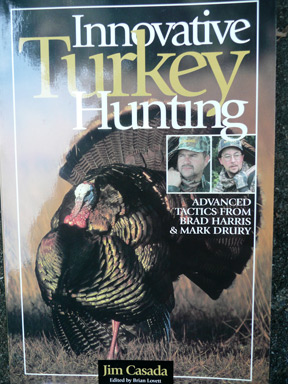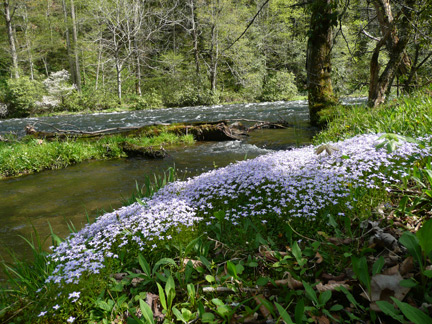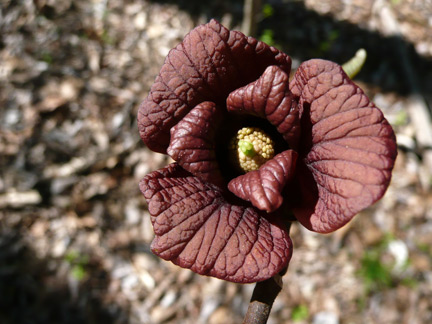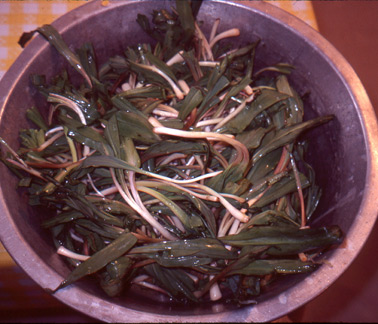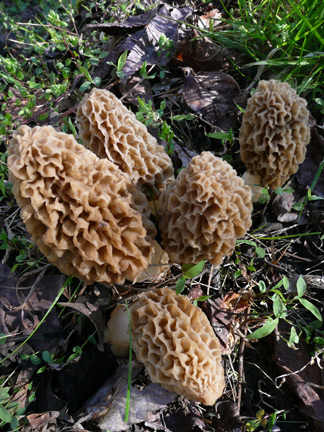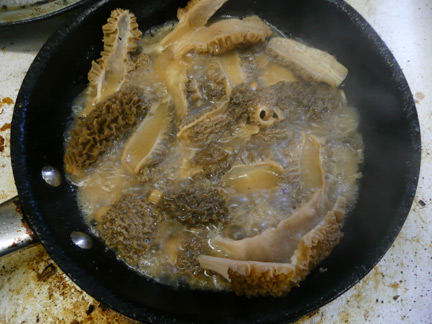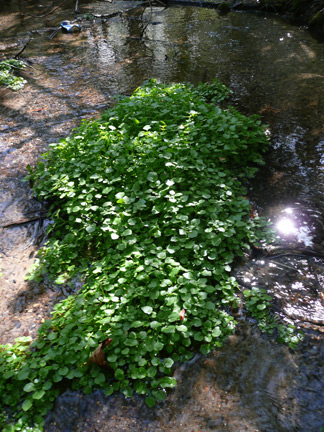April 2015 Newsletter
Click here to view this newsletter in a .pdf with a white background for easy printing. Of Turkeys, Fools, and a Magnificent Obsession
Then Iím off to Alabama for the annual mid-year board meeting of the Southeastern Outdoor Press Association. We always meet at the location where our fall conference will be held, and this year that takes the organizationís members to Eufaula. After the board meeting Pam Swanner, one of those dandy folks you meet in the outdoor industry, has arranged for those of us who are interested in turkeys to hunt for a couple of days. Pam handles public relations for the Alabama Black Belt Adventures Association in stellar fashion, and I know that our hunt at Great Southern Outdoors Plantation in Union Springs will be a dandy. Turkeys may or may not gobble, and triggers may or may not be squeezed, but I have total confidence that the arrangements will be first class and that and our hosts will do a topnotch job. There will be a tincture of sadness along with this month of turkey-hunting gladness. Just over a week ago I got a phone call well into the evening from the wife of a lifelong friend, Bill Rolen. He was my boyhood trout fishing buddy and we also did a fair amount of small game hunting together as well. Iíve never had a stauncher friend and the times we enjoyed together just being boys in the world of the outdoors remain some of the finest times of my life. One of his final requests had been that I deliver his eulogy, and I was greatly honored to be asked. I hope my attempt to call back some of our many magical moments together did him justice, but I doubt that was the case. Rest assured that as I sit in the turkey woods, a grand place for pondering and quiet reflection, heíll be in my mind. We arenít blessed to have many ďfriends of a lifetime,Ē and for me he was one. Gardening Of course thereís another side of the April equation, and thatís gardening. At this point Iím behind, not so much because of being slack but rather thanks to an unusually wet period in late winter and early spring. Other than putting in some horseradish roots, cutting up some Kennebec seed potatoes for planting, and ordering a bunch of seed from Sow True Seed, I havenít done much. Itís simply too wet to plow, and right now we have one of those steady rains that are both a bane and a blessing (depending on whether you want to plow or if crops need water). We had a really hard freeze night before last (22 degrees when I got up Sunday morning), and it did a number on most of my flowering shrubs. I also suspect considerable damage to the blueberries, even though they were only in bud, not in bloom. Tender stuff just canít take six or eight hours well below freezing, not to mention a heavy frost in the bargain. Iím just a gardener, albeit one who goes at it on a pretty grand scale, and you have to feel for farmers in situations like this. Itís all part of living close to the good earth, and no one who ever farmed or lived off the land would suggest for a moment that it is an easy life or one of sweet security. Still, those who love the good earth wouldnít so much as think of swapping their connection to it for those human buzzards circling endlessly along avenues of asphalt while pursuing their mindless daily routines. As for April and gardening, circumstances permitting this month Iíll get a great deal of stuff in the ground (some of it which should have gone in two or three weeks ago). Among the seed crops to be sown are lettuce, kale, mustard, spinach, chard, and leeks. Iíll also plant potatoes and onion slips and nestle broccoli, cabbage, and cauliflower plants in the ground. Add to that tomatoes to be started in flats and lots of chores in forms such as getting up support for my Nantahala runner beans and climbing crowder peas, along with trying my latest measures in an endless (and losing) battle against deer, and there will be plenty to fill my hours away from the turkey woods. As is always the case with my gardening efforts, spring brings the opportunity to try a few new vegetables. This year Iím reverting back to boyhood with plans for October beans, and Iím also going to try some mountain half runner beans. I doubt seriously if theyíll be any better than the Nantahala runner beans given to me by my good buddy Ken Roper several years ago (he can trace the seed back for over 100 years), but Iím always up for something new. Other newbies will include a try at Black Krim tomatoes and raising candy roasters. When I mentioned the latter in this newsletter back in the fall, not one but several readers very graciously shared seed with me and, in one case, even arranged for a mutual friend, Tipper Pressley, to deliver me some mature squash. Thatís my kind of folks! Iíll close my thoughts on gardening by noting that it is one of the most peaceful, satisfying pursuits imaginable. A local woman once called me an ďold dirt dauber,Ē and I donít know that Iíve ever been paid a finer compliment. Put me on my knees with a trowel in my hand and dirt under my fingernails, and Iím happy as a hog at a trough just filled with slop. If you are a gardener, you know what I mean. I would also encourage those of you who do garden to save seeds and study the importance of growing foodstuffs (and flowers) which havenít been genetically modified to the nth degree. I worry about the predominance of the huge agro-chemical folks like Monsanto, and during my lifetime I have seen quantum changes in the nature of our garden plants. Thatís why Iím mentioning Sow True Seeds (and there are many similar companies devoted to preservation and perpetuation of old-time, proven plants). Natureís April Bounty The arrival of spring brings pleasures beyond gobbling turkeys, singing and mating birds, earthís renewal, and the joys of gardening. Two distinct sources of enjoyment which have always been of special note to me involve wildflowers and edible delicacies from the woodlands and fields. Although wildflowers reach their peak of bloom in this part of the world in early May, thereís beauty aplenty to be seen in April. Redbuds and dogwoods lead the color parade, but in the forest understory, along fence rows, on banks, and indeed most anywhere the observant eye turns youíll encounter pure delight. Bluets and dandelions are already in flower here, as are redbuds, and the first hints of white have begun to show on dogwoods. When I take to the woods Iíll find pawpaws in flower (I always note them because of their promise of a pawpaw pudding months down the road), and soon blackberries will show the first hints of white. With that, more likely than not, will come what Iíve variously heard described over the years as blackberry winter, catbird squall, dogwood winter, or simply a late ďcold spell.Ē
Three things I associate with spring are prime edibles, and rest assured that the two of them to be found locally occupy some of my time and attention at this season. These items are ramps, morel mushrooms, and poke sallet. Ramps donít grow locally but are abundant (if you know where to look for them) in the high country of the Smokies where I grew up. Just the other day I read a comment from some citified fellow reckoning that ramps didnít have anywhere near the smell often mentioned in connection with them. Quite simply, the guy is either an idiot or his smell apparatus needs recalibrating. While itís true that when cooked ramps lose their pungency, a raw ramp (which is delicious) will redefine halitosis to the nth degree. By way of comparison garlic is a sissy.
When I was a lad, anyone who came to school after having consumed raw ramps would unceremoniously be sent home immediately. The odor would permeate a classroom and leave students gasping and purt nigh gagging. A similar situation would develop in a backcountry campsite. Fortunately thereís an easy answer. Once you eat a bait of raw ramps you wonít smell a thing. Incidentally, they are mild to the taste and flat-out delicious when served in a salad featuring branch lettuce along with the ramps and a dressing of hot bacon grease and bacon bits to make a ďkilt salad.Ē The grease wilts the lettuce and the bacon adds flavor in a wondrous way.
While I canít avail myself of ramps in nearby woods, there is poke sallet aplenty along ditch banks, in old clearings, on rural roadsides, and the like. Finding poke is no problem, but itís morels which captivate me. They are elusive, pop out suddenly during warm spells (often after rain), and can be quite difficult to find. Yet the 100 or so acres I own produces a good crop of them year after year, and rest assured as I hunt turkeys there my eyes are also constantly searching for morels. Once located, they are of sufficient meaning to make me forget all about turkeys for a time. Indeed, I know of at least two occasions where my obsession with morels has cost me turkeys. But turkeys can be hunted for a month; morels are only around for 10 days to two weeks. Thatís about it for this month other than to wish those of you who are turkey hunters all the best and those of you who garden bountiful harvests. Iím adding some recipes focusing in part on foods Iíve mentioned, and come next month Iíll try to remember to give you a report on how things have gone for me in the turkey hunting woods. Recipes
POKE SALLET Gather a mess of tender poke sprouts (they are best when 3 to 5 inches high) and rinse thoroughly to remove any dirt. Place in a pot and bring the water to a rolling boil, then cool to a simmer before pouring the poke sallet and water into a colander to drain. Repeat the process at least once and preferably twice. The reason for doing this is that poke weed is exceptionally rich in Vitamin A, so much so that it can be toxic unless you use this cook and drain process to remove some of the vitamin. Next place the drained poke in a skillet with a bit of melted butter or bacon grease. Heat until piping hot, add salt and black pepper to taste, and serve immediately. Some folks like to garnish with chopped boiled eggs or to break a couple of eggs into the greens when they are added to the skillet and stir until the eggs have cooked. A pone of cornbread or cathead biscuits goes mighty fine with poke sallet. FRIED TURKEY TENDERS Cut half a wild turkey breast into one-inch strips, making sure you cut across the grain. Then beat with a meat hammer until holy (in other words, pound the hell out of the strips). Marinate for an hour or two in buttermilk. Dip strips in flour, and then dip in beaten eggs before flouring a second time. Fry in piping hot canola oil until golden brown (make sure the oil is hot before you add the strips). Serve immediately. Thank you for subscribing to the
Jim Casada Outdoors
newsletter. |
||||||||
|
Send mail to
webmaster@jimcasadaoutdoors.com with
questions or comments about this Web site. |
